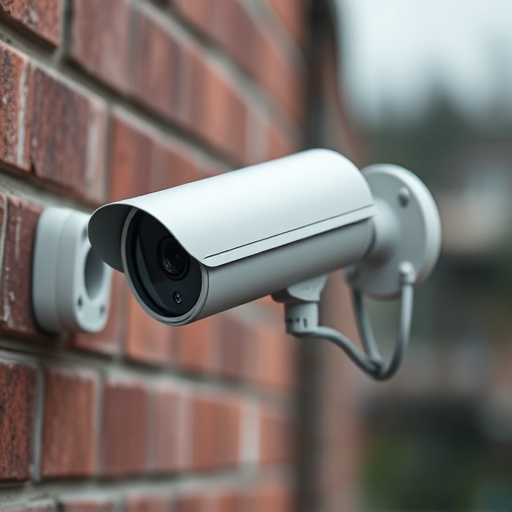In today's digital age, fake security monitoring devices disguised as cameras are a growing concern, deceiving homeowners and businesses with bogus surveillance systems. To protect against them, be vigilant, examine setups for tampering or unusual features, and check for incorrect height placement. Optimal camera placement is crucial for effective security, with strategic positioning enhancing deterrence and improving image quality with good lighting. However, legal and ethical concerns arise from setting up fake cameras, which can invade privacy and lead to liabilities. Understanding local regulations and respecting privacy rights are essential when considering mock security equipment.
In today’s digital age, security monitoring has evolved, often with a unique twist: fake security cameras. This article delves into the intricate world of these deceptive devices, exploring their impact on public and private spaces. We analyze the strategic placement of fake security camera height, offering insights to enhance visual surveillance while navigating legal and ethical boundaries. By understanding these aspects, individuals can make informed decisions regarding the implementation of fake security camera setups for optimal protection without infringing on privacy rights.
- Understanding Fake Security Monitoring Devices
- The Role of Camera Height in Security
- Strategies for Effective Fake Security Camera Placement
- Legal and Ethical Considerations for Fake Surveillance Setup
Understanding Fake Security Monitoring Devices
Fake security monitoring devices, often disguised as genuine cameras, have become a growing concern in today’s digital age. These fraudulent setups are meticulously designed to deceive homeowners and businesses into believing they have robust security systems in place. Understanding how these devices operate is the first step towards safeguarding against them.
One of the key tactics used by these fake cameras is their strategic placement, often mimicking legitimate security camera height and positioning. They may be mounted in plain sight or hidden in subtle locations to trick unsuspecting individuals into thinking they are real surveillance equipment. Homeowners should be vigilant and examine the setup closely, checking for any signs of tampering or unusual features that might indicate a fake security camera height placement.
The Role of Camera Height in Security
The placement of security cameras, particularly their height, plays a significant role in enhancing or compromising the effectiveness of a surveillance system. In many cases, poorly positioned cameras can leave critical areas blind spots, negating the intended security measures. For instance, mounting a camera too low might not capture a clear view of overhead activities, while positioning it too high could result in distorted images due to perspective.
Optimal camera height varies based on the environment and objectives. General guidelines suggest placing cameras at eye level or slightly elevated to ensure comprehensive coverage without introducing unnecessary distortions. Fake security monitoring devices, when strategically installed at the right heights, can deter potential intruders by conveying a sense of thorough observation, thereby dissuading malicious activities.
Strategies for Effective Fake Security Camera Placement
To maximize the effectiveness of fake security monitoring devices, strategic placement is key, especially when it comes to fake security camera height placement. Cameras positioned at eye level or slightly elevated mimic real surveillance equipment, making them less obvious to potential intruders. This simple trick can significantly deter crime, as perpetrators may feel they’re being watched even if the system isn’t active.
When setting up these devices, consider common entry points and areas prone to theft or vandalism. Placement near windows, doors, and valuable assets provides a strong deterrent without requiring extensive installation. Additionally, ensuring good lighting in these areas enhances the camera’s visibility and image quality, contributing to overall security.
Legal and Ethical Considerations for Fake Surveillance Setup
Setting up a fake security monitoring device, particularly fake security cameras, raises important legal and ethical considerations that cannot be overlooked. While it may seem like an innocent prank or practical joke, deploying realistic-looking but non-functional surveillance equipment can have serious implications. One of the primary concerns is privacy invasion, as even mock cameras positioned in strategic locations, such as at fake security camera height placement designed to mimic actual surveillance, can create a sense of unease and infringe on individuals’ personal space.
Additionally, there are legal ramifications to consider. Depending on your jurisdiction, simulating surveillance equipment could be considered fraudulent or deceptive practices, leading to potential civil or even criminal liabilities. It’s crucial to understand the laws regarding surveillance technology in your area, including any restrictions on camera placement, both real and fake. Respecting privacy rights and adhering to legal boundaries are essential when setting up what appears to be a security monitoring device but serves no actual purpose beyond deception.
While fake security monitoring devices can serve as a deterrent, it’s crucial to understand their limitations. Proper placement, such as considering camera height, and legal ethics are essential for effective use. By strategically positioning these devices and adhering to relevant regulations, property owners can enhance overall security without compromising privacy or incurring unnecessary costs.
